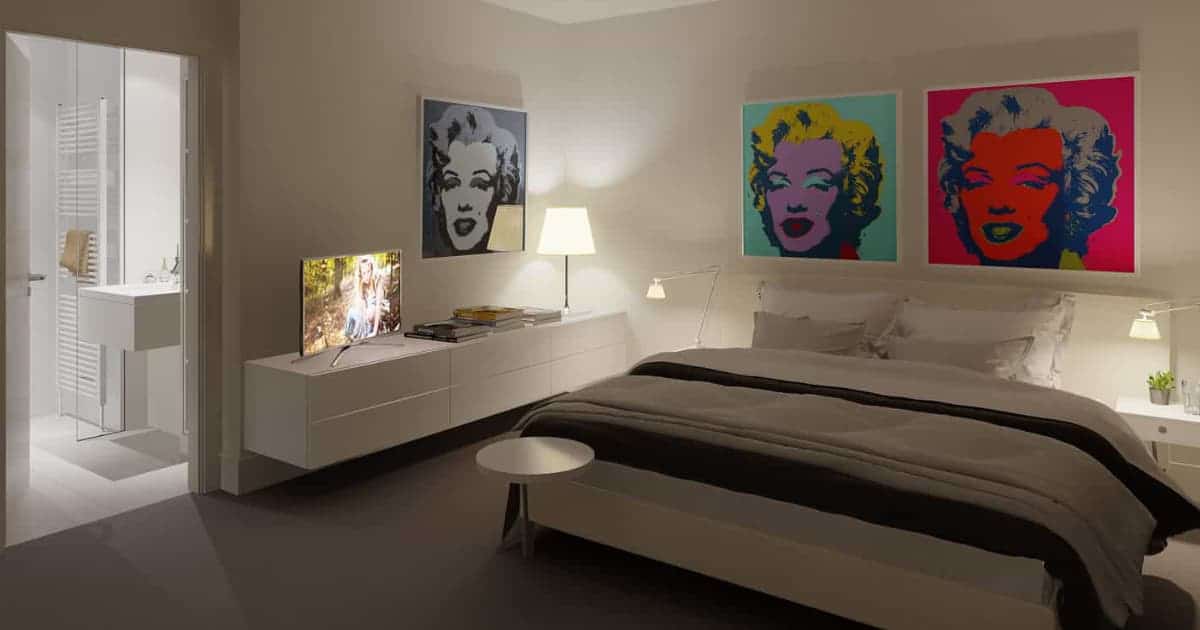In the hustle and bustle of the modern world, the concept of minimalism in home design has gained unprecedented popularity. Beyond being a mere aesthetic choice, designing a minimalist home is a deliberate embrace of simplicity, functionality, and tranquility. Let’s delve into the various facets of how thoughtful design transforms a living space into a haven of minimalistic elegance.

1. The Essence of Minimalism: Understanding the Core Principles
At its core, minimalism is about paring down to the essentials, creating an environment free from unnecessary clutter. Understanding the principles of minimalism involves embracing the mantra “less is more.” Clean lines, a neutral color palette, and a focus on functionality are the hallmarks that lay the foundation for a minimalist home.
2. Streamlined Spaces: Embracing Functional Simplicity
Minimalist design prioritizes functionality without sacrificing style. Every element within a room serves a purpose, contributing to the overall harmony. Streamlined spaces are not just visually appealing; they also foster a sense of calm and order. Furniture and decor are carefully selected, creating a cohesive and purposeful atmosphere.
3. The Power of Neutral Colors: Creating Calm Amidst Chaos
In a minimalist home, color takes a back seat to form and function. Neutral color schemes, such as whites, grays, and earth tones, dominate the palette. These subdued hues not only contribute to a clean and cohesive aesthetic but also have a calming effect, transforming the home into a serene sanctuary amidst the chaos of the outside world.
4. Decluttering as an Art Form: From Chaos to Composition
Central to minimalist design is the intentional removal of unnecessary items. This act of decluttering is not merely a practical endeavor but an art form. Each item retained becomes a deliberate choice, contributing to the overall composition of the space. The result is not emptiness but a curated collection of essentials.
5. Multi-Functional Furniture: Maximizing Space with Purpose
In a minimalist home, every piece of furniture is chosen with a purpose. Multi-functional furniture, such as storage ottomans or sofa beds, becomes a key player in maximizing space. Each item serves dual roles, enhancing both utility and aesthetics. This intentional approach transforms living spaces, making them adaptable to various needs.
6. Natural Light: Illuminating the Beauty of Simplicity
Minimalist design often emphasizes the importance of natural light. Large windows and open floor plans invite sunlight to dance through the rooms, creating an airy and expansive feel. The interplay of light and shadow becomes an integral part of the design, enhancing the visual appeal and warmth of the space.
7. Bringing Nature Indoors: Greenery in Minimalist Design
The inclusion of indoor plants brings a touch of nature to minimalist interiors. The presence of greenery not only adds visual interest but also contributes to a sense of well-being. Selecting a few carefully placed plants complements the simplicity of the design, infusing life and vibrancy into the space.
8. Artful Storage Solutions: Concealing While Revealing
In a minimalist home, storage is not just a practical necessity but an artful endeavor. Concealed storage solutions, such as built-in cabinets and hidden shelves, maintain the clean lines of the design while providing ample space for essentials. This intentional approach to storage ensures that belongings are both organized and visually unobtrusive.
Conclusion: The Poetic Beauty of Minimalism
In the realm of home design, creating a minimalist haven is not a rejection of abundance but an embrace of poetic simplicity. It is a conscious effort to curate a living space that resonates with elegance, functionality, and tranquility. The art of designing a minimalist home goes beyond aesthetics; it is a transformative journey that brings forth the poetic beauty inherent in a life well-edited.